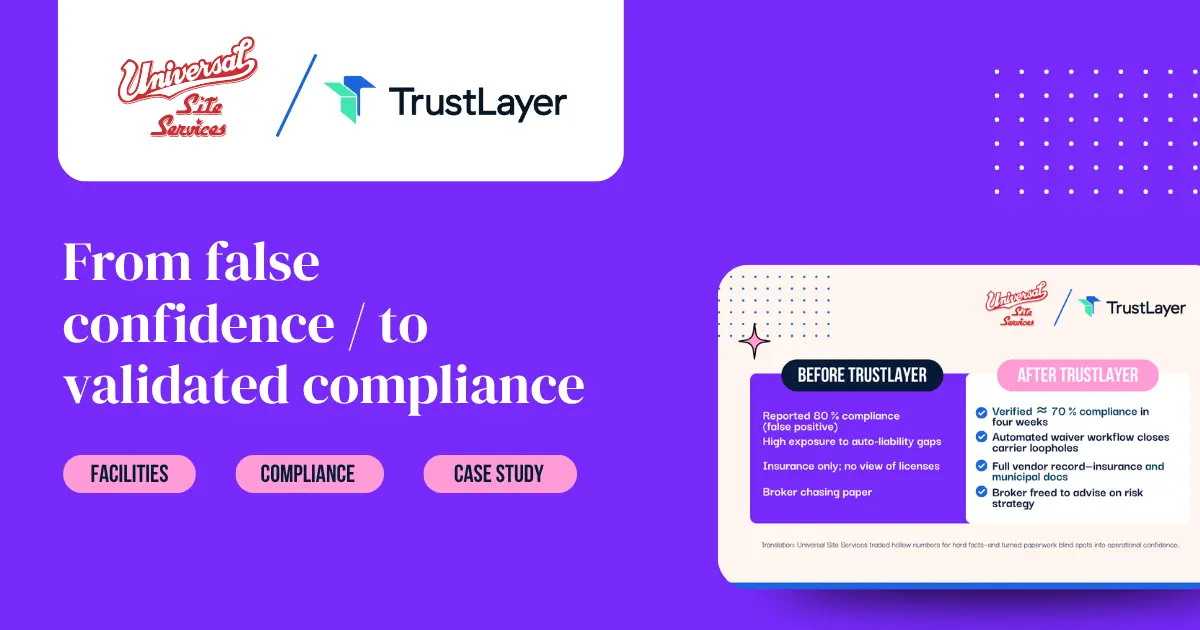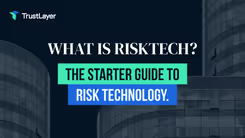The Real Price of Incomplete Proof

Imagine this: a construction company starts a significant project, confident that all its subcontractors have the right insurance. Weeks later, disaster strikes-a subcontractor causes damage, and suddenly, the general contractor faces a costly lawsuit. The problem? The certificate of insurance (COI) provided was incomplete or outdated. This isn’t just a paperwork hiccup; it’s a financial nightmare in the making.
Why Certificates of Insurance Matter More Than You Think
Certificates of insurance are often treated like a checkbox in the onboarding process. However, these documents serve a critical purpose: they demonstrate that the parties involved have the necessary insurance coverage to protect against potential risks. Without them, companies expose themselves to possible liability that can reach into the millions of dollars.
According to a 2023 survey by the Risk & Insurance Management Society (RIMS), nearly 40% of companies reported experiencing a claim or loss that could have been avoided with proper insurance verification. The cost? On average, these incidents resulted in losses exceeding $500,000 per event. That’s not pocket change —it’s a devastating blow to any business.
The Hidden Risks of Incomplete or Outdated COIs
Incomplete COIs often lack critical details, such as policy limits, effective dates, or the scope of coverage. Without this information, companies can’t be sure if the insurance actually covers the work being done. Worse, outdated COIs might reflect coverage that has expired or been canceled without the knowledge of the contracting party.
Consider the 2022 case of a Midwest manufacturing firm that subcontracted part of its assembly line installation. The subcontractor provided a COI that looked valid but had expired months earlier. When an accident occurred, the manufacturer was left footing the bill for damages and legal fees, totalling over $1.2 million. This example underscores how incomplete proof isn’t just a clerical error-it’s a business risk.
Moreover, the implications of inadequate insurance verification extend beyond immediate financial losses. They can also damage a company's reputation and erode trust with clients and partners. In industries where safety and reliability are paramount, such as construction and healthcare, a lapse in insurance coverage can result in the loss of future contracts and business opportunities. Companies may find themselves in a precarious position, having to explain to stakeholders why they failed to ensure proper coverage, which can lead to long-lasting repercussions in their market standing.
Furthermore, the complexity of modern business relationships often involves multiple parties, each with its own insurance requirements. This web of obligations can make it challenging to track and verify COIs effectively. A robust system for managing these documents is essential, as it not only ensures compliance but also fosters a culture of accountability and risk awareness within the organization. By prioritizing the verification of COIs, companies can create a more secure operational environment, ultimately leading to enhanced stability and growth in an increasingly competitive landscape.
Common Causes of Incomplete Proof
It’s easy to blame subcontractors or vendors for submitting incomplete COIs, but the issue often runs deeper. Many organizations lack a standardized process for verifying and tracking insurance documents, relying on manual checks or outdated spreadsheets. This creates gaps where incomplete or inaccurate COIs slip through. Furthermore, the absence of a centralized system can lead to miscommunication among team members, as different departments may have varying interpretations of what constitutes adequate proof of insurance. This inconsistency can exacerbate the problem, as the same vendor might be evaluated differently by various stakeholders within the organization.
Manual Processes and Human Error
When insurance verification depends on emails, phone calls, or manual data entry, mistakes are inevitable. A missing signature, a typo in the policy number, or a failure to update expiration dates can all result in incomplete proof of coverage. These errors multiply when companies manage hundreds or thousands of vendors. Additionally, the pressure of tight deadlines can lead to rushed reviews, further increasing the likelihood of oversight. The reliance on human judgment without automated checks can create a precarious situation where critical documents are either overlooked or misinterpreted, potentially exposing the organization to significant financial risks in the event of a claim.
Misunderstanding Insurance Requirements
Not all companies fully understand what to look for in a COI. They might accept a certificate that doesn’t meet their specific risk management needs or fail to confirm that the coverage matches contractual obligations. This lack of expertise can lead to accepting insufficient proof, leaving the company vulnerable. Moreover, the complexity of insurance language can confuse even seasoned professionals, making it challenging to discern the nuances of coverage limits, exclusions, and additional insured requirements. As a result, organizations may inadvertently expose themselves to liabilities that could have been mitigated with a more thorough understanding of their insurance needs and a more diligent review process.
The Financial Fallout: More Than Just Legal Fees
When incomplete proof leaves claims uncovered, the costs extend beyond immediate legal fees or settlements. There are impacts on business reputation, increased insurance premiums, and operational disruptions. These ripple effects can be devastating. The long-term implications can include a loss of client trust and a tarnished brand image, which can take years to rebuild. Companies may find themselves in a cycle of damage control, diverting resources away from growth initiatives to address the fallout from these claims.
Higher Insurance Premiums and Deductibles
Insurance companies track claims history closely. A single uncovered claim can trigger premium increases or even lead to the refusal to renew policies. For example, an analysis by Marsh in 2023 found that companies with poor COI management saw average premium increases of 15-25% after a claim related to uninsured subcontractors. Moreover, insurers may impose stricter conditions or require additional documentation for future coverage, further complicating the risk management landscape for businesses. This can lead to a situation where companies are forced to shop around for new policies, which can be both time-consuming and costly, as they may not find terms as favorable as their previous coverage.
Operational Delays and Lost Opportunities
When insurance gaps are discovered mid-project, work often comes to a halt until the issue is resolved. This can delay timelines, frustrate clients, and lead to penalties or lost contracts. In competitive industries, these setbacks can cost more than money-they can cost future business. The inability to meet deadlines can also strain relationships with suppliers and subcontractors, who may be hesitant to work with a company that has a history of operational disruptions. Additionally, the time spent resolving these issues could have been utilized for strategic planning or pursuing new projects, ultimately stunting growth and innovation within the organization. The cumulative effect of these operational delays can create an environment where a company struggles to maintain its market position, as competitors seize the opportunity to fill the void left by an organization in turmoil.
How Licensed Insurance Professionals Can Help
TrustLayer’s licensed insurance professionals understand the complexities of insurance verification. They know what to look for in a COI to ensure it’s complete and compliant with contractual requirements. Their expertise helps companies avoid the pitfalls of incomplete proof by providing reliable guidance and support.
Having experts review and verify insurance documents reduces the risk of costly oversights. They can identify missing information, clarify ambiguous policy language, and confirm that coverage aligns with project needs. This proactive approach saves companies from unexpected liabilities and financial strain.
In addition to their verification skills, licensed insurance professionals also stay current with the ever-evolving landscape of insurance regulations and industry standards. They are adept at navigating the nuances of different policies and can provide insights into best practices for risk management. By leveraging their knowledge, companies can make informed decisions about their insurance needs, ensuring they are adequately protected against potential risks that may arise during the course of their operations.
Furthermore, these professionals often serve as a bridge between clients and insurance carriers, facilitating effective communication and ensuring that all parties are aligned. This relationship can be invaluable, especially in complex projects that involve multiple stakeholders. By fostering transparency and understanding, licensed insurance professionals help to build trust and confidence, allowing businesses to focus on their core activities without the constant worry of insurance-related issues lurking in the background.
Building a Culture of Diligence Around Insurance Proof
It’s not enough to rely solely on technology or individual efforts. Organizations must foster a culture that prioritizes thorough insurance verification as a critical part of risk management. This means training teams, setting clear policies, and consistently auditing COIs. By embedding this diligence into the organizational ethos, companies can mitigate risks and enhance their overall operational integrity.
Training and Awareness
Educating employees about the importance of complete and accurate COIs empowers them to spot red flags early. When everyone understands the stakes, the chances of incomplete proof slipping through decrease significantly. Training sessions can include real-world scenarios and case studies that highlight the repercussions of inadequate insurance verification, making the concept more relatable and urgent. Additionally, creating a feedback loop where employees can share their experiences and insights can foster a more engaged workforce, as they feel their contributions directly impact the organization’s risk management efforts.
Standardized Processes and Regular Audits
Implementing standardized procedures for collecting, verifying, and updating COIs ensures consistency. Regular audits help identify errors and gaps before they become costly problems. This discipline can transform insurance verification from a dreaded task into a strategic advantage. Furthermore, integrating technology solutions, such as automated tracking systems, can streamline the process, allowing teams to focus on analysis rather than administrative tasks. By establishing a routine of review and improvement, organizations can adapt to changing regulations and industry standards, ensuring that their insurance verification processes remain robust and effective.
Encouraging Accountability Across Departments
Fostering a culture of diligence also involves encouraging accountability across all departments. Each team member, regardless of their role, should understand how their actions contribute to the overall risk management framework. By establishing clear lines of responsibility and encouraging interdepartmental communication, organizations can create a more cohesive approach to insurance verification. For instance, regular cross-functional meetings can be held to discuss challenges and successes in managing COIs, allowing for shared learning and collaborative problem-solving.
Leveraging Technology for Enhanced Verification
In addition to training and standardized processes, leveraging technology can significantly enhance the verification of Certificates of Insurance. Advanced software solutions can automate the collection and validation of COIs, reducing the likelihood of human error and ensuring that all documentation is up-to-date. Moreover, utilizing data analytics can provide valuable insights into trends and potential risks, enabling organizations to address issues before they escalate proactively. By embracing these technological advancements, companies can not only streamline their processes but also position themselves as leaders in risk management within their industry.
Looking Ahead: The Cost of Complacency Is Too High
Ignoring the real price of incomplete proof isn’t just risky—it’s reckless. Businesses that fail to verify insurance properly are gambling with their financial stability and reputation. The stories of companies facing multimillion-dollar losses due to incomplete or outdated Certificates of Insurance (COIs) are cautionary tales that should not be ignored. For instance, a well-known construction firm recently faced a lawsuit after a subcontractor's insurance lapsed, leading to significant liability claims that spiraled out of control. Such incidents highlight the urgent need for rigorous insurance verification processes.
For companies serious about protecting themselves, investing in expert guidance and robust processes is essential. Licensed insurance professionals, such as those at TrustLayer, offer the knowledge and experience necessary to navigate this complex terrain with confidence. They can help businesses implement systematic checks and balances to ensure that all insurance documentation is current and comprehensive. Additionally, these experts can provide valuable insights into emerging risks and trends in the insurance landscape, enabling companies to adapt their strategies proactively.
If you want to dive deeper into managing insurance risks and protecting your business, check out other insightful articles from TrustLayer. These resources cover a range of topics, from understanding the nuances of different types of coverage to best practices for maintaining compliance in an ever-evolving regulatory environment. And when you’re ready, book a consult with their insurance experts to get personalized advice tailored to your unique needs. Don’t wait for incomplete proof to cost you more than it should. By taking proactive steps now, you can safeguard your business against unforeseen challenges and position it for long-term success.
Don't let the real price of incomplete proof jeopardize your business. TrustLayer is here to revolutionize your risk management with our best-in-class COI tracker. Say goodbye to the administrative burden of manual document verification and embrace the future with our automated solutions. Join the hundreds of thousands of companies that trust TrustLayer to safeguard their operations and streamline vendor document management. It's time to move forward with a partner who understands and cares about your risk management needs. Set up a time to talk with our team and discover how we can help you build following practices for a more secure and efficient business environment.
















